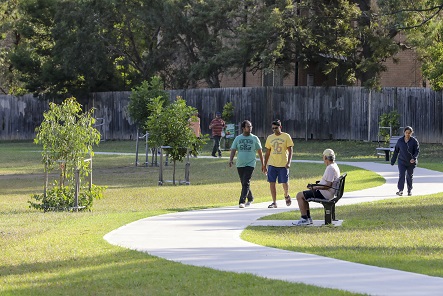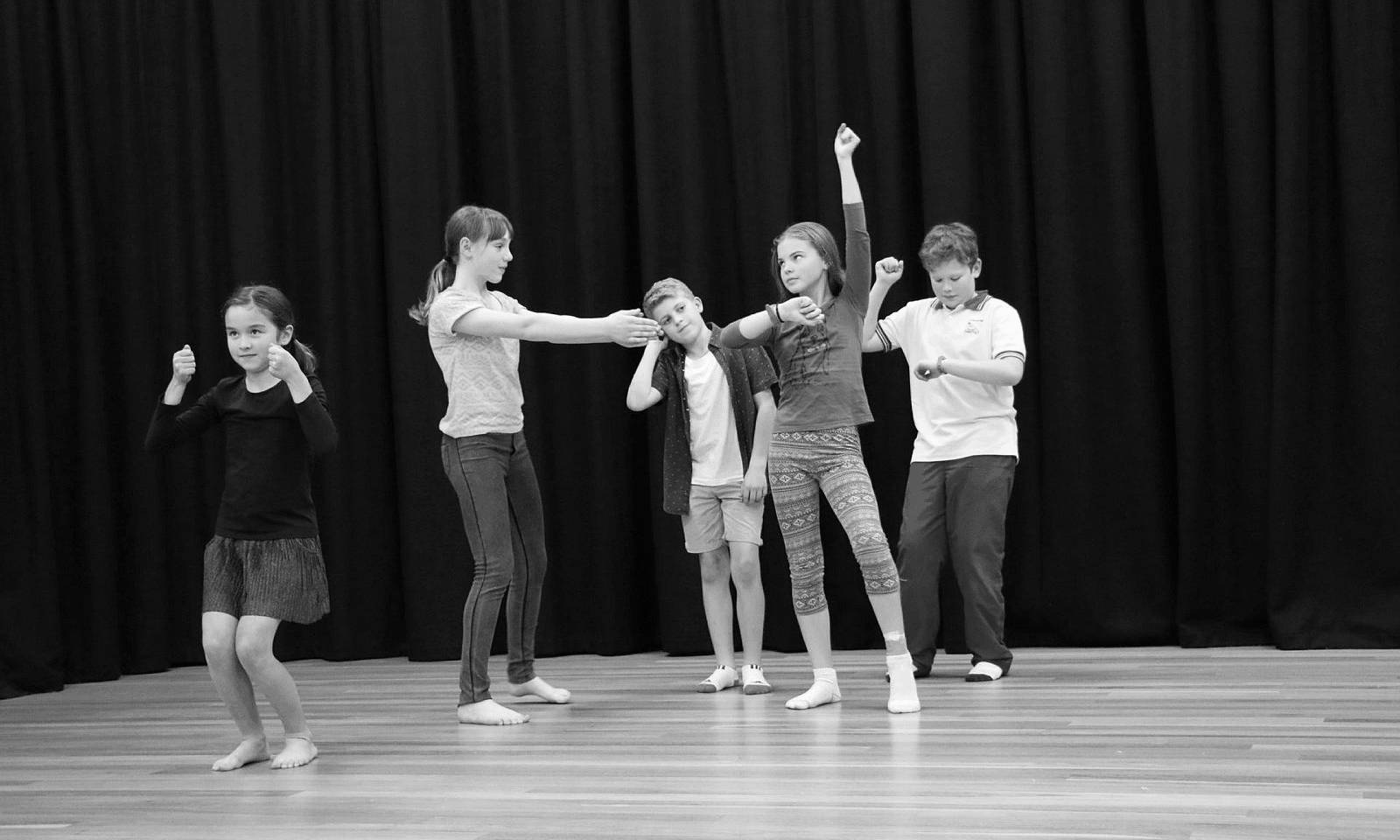Why trees?
(Back to top)Trees are ecological powerhouses, providing a large number of benefits for the whole community, and here in the City of Parramatta, we are lucky to have a number of great parks and public spaces where you can enjoy being around trees.
Large, iconic trees act as landmarks and add character to our suburbs and streets, such as the palms in Prince Alfred Square, tall eucalyptus species at Douglass Avenue Reserve, Carlingford and the jacaranda street trees through Northmead. Trees are so important to making a ‘place’ that there has been a cabbage tree palm on our Council crest since the 1860s!
Well treed parks and reserves provide the community with places to meet, play and celebrate, building community cohesion and community spirit. They provide places of rest and sanctuary, where we can take a break from our daily life and reconnect with nature.
Trees, especially mature trees with dense canopies, play a vital role in providing us with a social, healthy and liveable place to live work and play. They contribute to our physical health and wellbeing, the health of our natural environment and to the local economy. They provide essential urban infrastructure services by keeping temperatures cool, supporting erosion control, slowing stormwater flows and reducing nutrient loads in our urban waterways.
Social benefit of trees (Back to top)
Trees provide us with a range of social benefits which help keep us physically and mentally well. These benefits are shared across the community, which helps to improve public health outcomes, reducing pressure on medical services.
-
Research shows that people are more likely to walk, run and cycle on tree-lined streets, which is great for our physical health.
For people living with lifestyle-related illnesses such as overweight/obesity, physical activity is an important aspect to getting well.
In 2017-18, less than 40% of all Australian adults were achieving the recommended 150-300 minutes a week of moderate physical activity (AIHW, 2020).
-
There is growing evidence of the role that green spaces play in supporting children to explore, create and engage in ‘safe’ risk-taking play. These types of play also help children to develop self-confidence and resilience, and promote physical activity.
-
As our summers get longer and hotter, the risk of heat-related illnesses increases, especially for vulnerable community members including the very young, people over 64 years and those with pre-existing or chronic illnesses.
The shade provided by large, dense canopy trees can help to reduce local daytime temperatures by up 2oC.
-
Research shows that the availability of, and access to green spaces has a positive impact on our mental health.
Being around trees has been associated with lower levels of depression and other mental illnesses.
It’s even been found that seeing trees and greenery through a window can increase your wellbeing.
-
The shade of dense canopy trees can reduce up to 75% of UV radiation, providing additional protection from sunburns and skin cancers.
Environmental benefits of trees (Back to top)
Trees provide us with a range of environmental benefits which not only help create a healthy natural environment, but support our health as well.
- Trees help cool our communities
Research confirms that trees play a critical role in helping to reduce the build-up of heat in urban areas, especially over summer. They provide shade for hard surfaces like roads and paths, which are known to absorb heat from the sun, which is then released at night, making nights hotter.
The natural process of transpiration increases water vapour in the air, which cools the air around the tree.
-
Trees with large canopies can reduce the impact of heavy rainfall by slowing the speed of the rain reaching the ground. The root system of trees can also help to slow stormwater.
-
Trees have been shown to be good at filtering small particles of dust and pollution in the air. Trees rely on some of the chemicals in our air to grow. They take ozone, nitrous oxides, sulphur dioxides, carbon monoxide and carbon dioxide from the air and provide us with oxygen.
-
Trees can reduce the level of nutrients, such as phosphorus and nitrogen, entering our drains and waterways, as they use these nutrients to grow.
Trees with above ground root systems also act as a filter, capturing waste before it enters our drains and waterways.
-
Trees are used as homes for a range of animals including birds, insects and mammals. They are also an essential source of food for animals.
-
The root systems of trees help to hold soils together, and provides a way for water to reach deeper levels of the soil.
The leaves of deciduous trees also provides a great mulch for garden beds, which prevents moisture loss and promotes the development of beneficial microorganisms.
Economic benefits of trees (Back to top)
Trees provide us with economic benefits on a household and City scale and depending on the valuation method used, a street tree can provide economic value in the thousands.
Within the City of Parramatta the sustainability of the tree, the landscape and amenity significance are considered when determining a tree’s retention value.
-
Thoughtfully placed trees with large canopies can reduce the amount of heat entering your building through windows and walls, which means you need to run the air conditioning less in summer, saving you money on energy bills.
-
There is evidence that properties on tree-lined streets can achieve increased market prices when compared to those on treeless streets.
The results from a Sydney based study (AECOM, 2017) identified that a 10 per cent increase in street tree canopy could increase property values.
-
Shade from trees can help to extend the life of pathways and asphalts, which reduces the costs associated with early replacement.
The role of trees managing stormwater flows can help to extend the life of stormwater infrastructure, and can reduce the costs of stormwater damage.
-
There is growing evidence that those areas with high levels of urban greening have generally healthier communities who are more likely to be physically active, which reduces the costs to the health system of lifestyle-related illnesses.
-
Research has shown that trees and green spaces not only draw shoppers into business districts, but that shoppers will stay in the area longer, which may see them spending more money.
For more information
(Back to top)Contact the Customer Service Centre on 9806 5050 or council@cityofparramatta.nsw.gov.au




